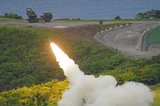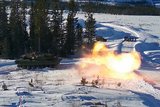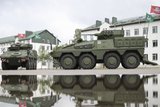India may revive deal for Israeli missiles
The Indian Army and the government of India are discussing ways to revive a $500 million order to buy Spike anti-tank guided missiles from Rafael, it was announced on 12 January.
India recently called off the deal to procure 8,000 missiles, souring the build up to Israel Prime Minister Benjamin Netanyahu's six-day visit to the country starting 14 January.
According to Bipin Rawat, chief of the Indian Army, the deal was scrapped after the state-run Defence Research and Development Organisation (DRDO) offered to manufacture similar missiles in line with premier Narendra Modi's pet 'Make in India' initiative.
Bipin Rawat said: ‘DRDO said…why you are going for a missile that we are capable of manufacturing and can give you better results. That is what led to retracting of the request for proposal.’
Rawat said the DRDO missiles were yet to be tested and would not be ready till 2022, which could hit India's operational capabilities in the interim.
Rawat continued: ‘So how do we bridge the gap between now and 2022? It's through the Spike. We can possibly look at a lesser number to meet the gap.’
India has been investing tens of billions of dollars in updating its Soviet-era military hardware to counter long-standing tensions with China and Pakistan.
Israel is a major weapons supplier to India, exporting an average of $1 billion of military equipment each year.
In April 2017, the two countries signed a military deal worth nearly $2 billion which includes the supply of medium-range surface-to-air missiles, launchers and communications technology.
India is aiming to end its status as the world's number one defence importer and to have 70% of hardware manufactured domestically by the turn of the decade.
More from Land Warfare
-
Germany signs multi-billion-dollar deals for 6x6 CAVS and GDELS Eagle vehicles
The order is a further boost for the Common Armoured Vehicles System programme which has notched notable successes in the past 12 months. The first vehicle, made in Finland, will be delivered next year with local production expected to ramp up in 2027.
-
![Rheinmetall and KNDS tank tie-up narrows trans-European options]()
Rheinmetall and KNDS tank tie-up narrows trans-European options
The French and German governments signed an agreement in June 2018 to cooperate on the development of a new main battle tank under the Main Ground Combat System programme but the effort has struggled. This new agreement may damage it further.
-
![Hungary set to begin using Hero 400 loitering munitions]()
Hungary set to begin using Hero 400 loitering munitions
Developed by Israel's Uvision and with systems being sold in the thousands to multiple European NATO countries and the US, the Hero family of loitering systems is also in production in the US and Italy, the latter through Rheinmetall.
-
![Light Reconnaissance Strike – enabling a vital mission set (Studio)]()
Light Reconnaissance Strike – enabling a vital mission set (Studio)
A new system-of-systems concept will unlock digital integration of sensors and weapons for Light Forces, allowing them to shape the battlefield environment on their own terms and upgrade legacy platforms.

























